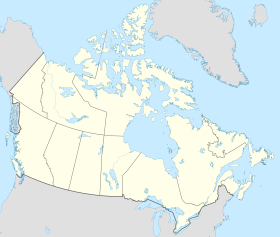
Back Alberta Afrikaans አልቤርታ Amharic Alberta ANG ألبرتا Arabic ܐܠܒܪܛܐ ARC البرتا ARZ এলবাৰ্টা Assamese Alberta AST अल्बर्टा AWA Alberta Azerbaijani
Alberta | |
|---|---|
| Motto(s): Latin: Fortis et liber ("Strong and free") | |
| Coordinates: 54°59′30″N 114°22′36″W / 54.99167°N 114.37667°W | |
| Country | Canada |
| Confederation | September 1, 1905 (split from Northwest Territories) (8th/9th, with Saskatchewan) |
| Capital | Edmonton |
| Largest city | Calgary |
| Largest metro | Calgary Region |
| Government | |
| • Type | Constitutional monarchy |
| • Lieutenant governor | Salma Lakhani |
| • Premier | Danielle Smith (UCP) |
| Legislature | Legislative Assembly of Alberta |
| Federal representation | Parliament of Canada |
| House seats | 34 of 338 (10.1%) |
| Senate seats | 6 of 105 (5.7%) |
| Area | |
| • Total | 661,848 km2 (255,541 sq mi) |
| • Land | 640,081 km2 (247,137 sq mi) |
| • Water | 19,531 km2 (7,541 sq mi) 3% |
| • Rank | Ranked 6th |
| 6.6% of Canada | |
| Population (2016) | |
| • Total | 4,067,175 [1] |
| • Estimate (2020 Q4) | 4,428,112 [2] |
| • Rank | Ranked 4th |
| • Density | 6.35/km2 (16.4/sq mi) |
| Demonym | Albertan |
| Official languages | English[3][4] |
| GDP | |
| • Rank | 3rd |
| • Total (2015) | CA$326.433 billion[5] |
| • Per capita | CA$78,100 (2nd) |
| HDI | |
| • HDI (2018) | 0.940[6] — Very high (1st) |
| Time zone | UTC−07:00 (Mountain) |
| • Summer (DST) | UTC−06:00 (Mountain DST) |
| Postal abbr. | AB |
| Postal code prefix | |
| ISO 3166 code | CA-AB |
| Flower | Wild rose |
| Tree | Lodgepole pine |
| Bird | Great horned owl |
| Rankings include all provinces and territories | |
Alberta is a province in western Canada. It is bounded by the provinces of British Columbia on the west, Saskatchewan on the east, the US state of Montana on the south and the Northwest Territories to the North.
Alberta is the fourth largest Canadian province with an area of 642,317 square kilometres (248,000 sq mi).[7] Alberta has around 4,067,175 living there, making it the fourth most populous province in Canada.
The capital of Alberta is Edmonton lying near the middle of Alberta. The city of Calgary, Alberta’s other major centre is located about 300 kilometres to the south of Edmonton.
- ↑ "Population and dwelling counts, for Canada, provinces and territories, 2016 and 2011 censuses". Statistics Canada. February 2, 2017. Retrieved April 30, 2017.
- ↑ "Population by year of Canada of Canada and territories". Statistics Canada. September 26, 2014. Archived from the original on June 19, 2016. Retrieved September 29, 2018.
- ↑ "Languages Act". Government of Alberta. Archived from the original on May 2, 2021. Retrieved March 7, 2019.
- ↑ Dupuis, Serge (5 February 2020). "Francophones of Alberta (Franco-Albertains)". The Canadian Encyclopedia. Retrieved 30 September 2020.
In 1988, as a reaction to the Supreme Court's Mercure case, Alberta passed the Alberta Languages Act, making English the province's official language and repealing the language rights enjoyed under the North-West Territories Act. However, the Act allowed the use of French in the Legislative Assembly and in court.
- ↑ "Gross domestic product, expenditure-based, by province and territory (2015)". Statistics Canada. November 9, 2016. Retrieved January 26, 2017.
- ↑ "Sub-national HDI - Subnational HDI - Global Data Lab". globaldatalab.org. Retrieved June 18, 2020.
- ↑ There are also two larger parts of Canada called Nunavut and Northwest Territories. However, Nunavut and Northwest Territories are territories, not provinces.


